– Briana Reilly: Good morning everyone. Thanks for joining us so early in this great space. I really do appreciate you coming. I am excited to talk about the present and future of juvenile justice in Wisconsin with our great team of panelists. So thank you all for, again, for coming and participating in this conversation. And now let’s introduce our panelists. We’re fortunate to be joined this morning by Tracy Benson, Sharlen Moore, and Erica Nelson. I’m gonna have them all introduce themselves and actually give us some insight about why they’re passionate about the criminal justice system and issues themselves. Let’s start with Tracy, please, if that’s okay.
– Good morning, everyone. My name is Tracy Benson, and I’m the director of the Community Justice Network for Youth. We’re a national network of about 125 community-based organizations, across about 20, 21 different states that work with kids and families that are impacted by the youth justice system. So we focus on youth of color, youth and families of color, and racial and ethnic disparities. It’s great to be here. I got my start as a youth and community organizer. And I found, just from my own experiences, and especially the young folk that we were working with, that they were getting unreasonable contact with police, and also getting put on a track to be pushed out of school and into the justice system. And so, we’ve lost youth organizers to the system, to gun violence. We bury too many young people and so, my passion from this work comes more out of necessity and survival for the folks that I consider family and friends. So it’s great to be here.
– My name is Sharlen Moore. And I kind of wear two different hats. Number one, thank you all so much for coming out to this 8:00 AM panel, I barely made it this morning. [panelists laughing] But I’m so thankful to be here and for this opportunity to share our work. Again, my name is Sharlen Moore and wear two different hats. Started a youth leadership organization called Urban Underground, which is a youth leadership organization, focused on activism and organizing young people, organize around issues related to health, education, criminal justice, and public safety. And that organization started about, probably about 19 years ago. And that was really when I connected with Tracy, was just around the time that we were organizing around school to prison pipeline sort of work, and cops of out school. And so fast forward 19 years later, a lot has happened in the state of Wisconsin, particularly in the city of Milwaukee. And with the different spaces I’ve been allowed to be a part of, youth justice kept coming up time and time again. And there weren’t a lot of advocates, particularly in Milwaukee, that was focused on the youth side.
There were a lot of advocates focused on the adult and reforming the adult system, but there weren’t many that was focusing on young people. So we took up the charge, and we formed what is now Youth Justice Milwaukee, which is a broad-based campaign, focused on just bottom line, closing down youth prisons and fighting for, and advocating for, alternatives for young people. And so, that has led us to our work today, as well as the many partners that we’ve come to know. Erica, with Kids Forward, and many other partners throughout the country.
– All right, good morning, everyone. My name’s Erica Nelson, and I am with the organization Kids Forward, which is formerly the Wisconsin Council on Children and Families. I run a project called Race to Equity that initially looked at racial disparities between African Americans and whites in Dane County. And in part of that research and that advocacy to increase racial equity here, locally, there was a look both at across-the-board domains, and juvenile justice was one of them. And both in Dane County, Madison, and the state of Wisconsin, racial disparities within the juvenile justice system, or the youth justice system, are extraordinary within this state. And so when you’re thinking about racial equity, I think it’s important not just to look, with respect to school outcomes or economic well-being, but oftentimes, deep-end systems, like the juvenile justice system and the child welfare system are sort of the end of a pipeline in which inequities have sort of piled up.
And so they’re very stark once they get to the deep-end system. So I believe that you can’t do racial equity work without also looking at reforming the systems. And then for myself, more personally, with respect to juvenile justice and youth justice, I spent time in my other career in New York City in the child welfare system and advocating on behalf of parents to have their children either stay with them and keep them out of foster care, or if they were already in foster care, bring them home as soon as possible. And the child welfare system is often a feeder itself into the juvenile justice system. And so there’s a lot of intersection and crossover between the two, and oftentimes, like the child welfare system, the children that are in the child welfare system and the children that are in the juvenile justice system, the circumstances that have them in those spaces are really rooted in trauma and rooted in crisis, that it is not sort of the doing of the youth, but it is larger structural and societal issues that we need to address. So that’s partly where I also come to this work.
– Briana: Thank you all. Just to kind of lay out the roadmap here, we’re gonna talk in three sections about this issue. First we’re gonna kind of give an overview of where we’re at here in Wisconsin. Second, where we’re going. And third, where the panelists think we should be going in Wisconsin to tackle this issue. So where we’re at, I’m just gonna give kind of a brief overview, because there’s been a lot going on here in Wisconsin over the last two years. So to set the scene, the state is currently operating two youth prisons in Irma; the Lincoln Hills School for Boys and the Copper Lake School for Girls. There’s been a lot of scrutiny over the practices there. Allegations of staff abuse, reviews documenting the use of pepper spray and strip searches, and a years-long criminal investigation that just wrapped up this spring and resulted in no charges. In the midst of all this, lawmakers last year, under former Republican Governor Scott Walker, passed a bipartisan bill to close the state’s youth prisons in 2021 and replace them with regional facilities to house youth inmates. So with that backdrop and before we dive a little more deeply into this topic, I just wanna turn to Erica and ask, this is a very hard task, so I appreciate you taking this on, but can you first give us a sense of the makeup of these youth prisons? Who’s there now, what brought them there, what parts of the state are they from, how long do they spend in these facilities?
– Okay, I think I can answer some of those questions [laughing]. They’re a lot of sort of numbers-based. But one I’d like to start, in part to sort of describe where the juvenile justice system has been a little bit over the last three decades in the state of Wisconsin, ’cause I think that’s really important. During the ’90s and sort of the superpredator era, there was a huge number of youth going into the juvenile justice system; secure facilities, detention, and the like.
And as a result of sort of conscientious reforms that the Burns Institute and others, and Sharlen and Urban Underground folks have been participating in, the youth involved in the system, and in particular in secure detention like Lincoln Hills and Copper Lake, has actually decreased significantly over the last three decades. In many cases, we went from being one of the worst states for juvenile justice, in terms of overall numbers, to one of making significant progress. However, what is absolutely key is to recognize that the disparities have not improved from 2003 to 2013. In fact, the reflection of youth of color has either remained the same or increased. So the rate at which white youth are getting less involved in the system is not happening as quick for African-American and Native youth, in particular. So that brings us to the point of who’s there and where they’re from. And if you look at Lincoln Hills School for Boys, I don’t know the most recent numbers. But I’m guessing maybe around 100 and some, overall. But the majority are from Milwaukee
– Sharlen: Yes, about 150.
– Erica: Yeah, at least 70%–
– Sharlen: 60% from Milwaukee,
– Erica: 60% from Milwaukee. And the majority of those young men are African-American. So and then, I think that what’s also been interesting, and Sharlen can talk about this a little bit as well is, since the, I don’t know, publicity conversations about the abuses and the harm that was taking place within Lincoln Hills and Copper Lake, one of the things that some counties did was they actually stopped sending their youth to Lincoln Hills in order to avoid that. So the population sort of decreased in Lincoln Hills and Copper Lake, to some degree as well, because there were counties, like Rock County and Dane, who were reticent to send youth to Lincoln Hills and Copper Lake. So in some ways, the reduction in that population is not necessarily because of across-the-board reforms, but just as a sort of response to the set of circumstances that were being experienced by other youth within Lincoln Hills. So that’s it in brief.
– Sharlen: So what we’re talking about as far, there’s a cross-range of situations that bring young people to Lincoln Hills and Copper Lake. There’s some extreme examples as far as young people, car-jacking, for example. They’ve changed that offense to now deem a young person as what they call a serious juvenile offender. Wisconsin is one of probably nine states now that has a very distinct status for particular crime that some young people do. And they put them in a separate category.
And I’ll talk a little bit more about the reason why that’s important, is because they’re creating a separate facility specifically for young people that are deemed serious juvenile offenders. And it ranges from that to a young person, a young lady that may run away from home, for example, or run away from shelter care because the judge wants, because we have very limited options and the judge wants to keep her “safe,” he’ll lock her up in prison. And we know young people there currently right now, they didn’t commit a crime, they didn’t hurt anyone, but because they’re running, particularly when people are running away, they’re running away from something, right? And the only way to keep them safe, because again, there’s no alternatives, viable alternatives, young people are getting locked up. And it’s really interesting, because once young people are committed to the Department of Correction, they can decided whether to keep a young person longer. They may say, “Oh, they need more time. ” They may have had infractions, again which has nothing to do why they’re there in the first place, and a young person can continue to be extended over and over again, did you wanna add anything?
– Tracy: So I know the question was directed around mostly the back end of the system after they see the judge and they’re looking at placement. I wanted to add a little to what Erica shared about the broader arc of youth justice and reform. So prior to the ’80s when the superpredator, and War on Drugs, and three strikes, and tough on crime and all of those things came out, the most common face of a youth going through the justice system was a runaway, white, young woman. And when the ’80s came, through policy and practice change and budget investment, within one decade there was a 100% shift in the face of who was going into the system. And so as Erica mentioned, crime’s gone down consistently since then.
There was a big set of reform efforts. There was multiple reform efforts around the country that largely benefited white youth. And it’s a lot of youth of color that are left languishing in the system. So after 20 years of reform, the political will to wanna continue reforms, especially if you’re in a county that went from, say 300 youth in your detention hall, down to maybe 120, might feel like you’ve actually done the hard, heavy lift of reform. So a lot of juvenile halls, the detention numbers went down, but largely it was white youth that benefited from that reform. Youth of color that were left, a lot of the federal resources that were funding reform efforts have also started to dwindle. And there is a narrative or a belief that, “Well wow, if we did this reform “and these black and brown kids are left in, “well then maybe they need to “actually still be in there. ” And so it’s actually really hard to look at. And the system itself, to note, that we believe that the justice system was created intentionally as a system for racialized social control. So it isn’t just haphazard that youth of color ended up in these systems.
It was pretty calculated when you actually look at the data and the population numbers. And so the systems were built treating youth in communities of color differently from the very beginning, from the facilities that youth were held in, white youth often got training schools and black youth were trained to herd cattle. Young Asian women were trained on how to become better housewives or marry an American and raise a family. Latino youth and Native youth were brought to– Native youth were brought to boarding schools. Both communities there was a lot of medical experiments, sterilization, the belief that they were feeble-minded and that they couldn’t be reformed. And so this is the history of the system that was actually built; some would say it was actually functioning the way it was created. And so when we talk about Lincoln Hills closing and what are we gonna do next, we have to look at something deeper than reform and tools and technology, but actually transformation and dare I say abolition, how we might actually create better well-being for our communities and our families.
– Now I’m curious, if you can talk about, are we seeing these transformational approaches in other states? I mean, where, kind of, does Wisconsin’s, some people might call them reforms, the overhaul of the youth justice system in Wisconsin, how does that compare to efforts in other states?
– Well, I think there’re more and more states that are looking at de-carcerating and closing state youth prisons. I know Texas went through a process, California shut down the Youth Authorities. But I think there’s a struggle, a lot of the state institutions that youth were being held in in California were shut down, but we did a study to actually see, the strategy for that is, we wanted to bring out kids back home to our own homes, not just closer to our home in a local prison, but back to families’ own homes, where they’re in a supportive network of family and community.
But what we found is that even closing these large facilities, there wasn’t much of a shift in actual kids coming back to their own homes. And so we saw it sort of as a shell game. You went from several large facilities to several more smaller facilities that were maybe closer to home and easier to get to, but still having the child out of home, in an out-of-home placement, in a secured facility with locks and bars and guards. And we believe that the best way to get the public safety is actually through well-being, that if kids have everything that they need, good schools, safe parks to play in, they can go learn how to play the violin, that that’s the best way to actually achieve public safety, not more police, more prisons. And so I think states have struggled. If litigation is what brought the movement, that’s not necessarily a set of willing decision-makers. It might be some federal oversight, like in the state of Wisconsin. And so we’ve seen some promising shifts in New York and in Washington D. C. And Sharlen will share a little bit more later.
But it’s really been a struggle to look at also how to make the dollars and the cost savings make it back into reinvesting into communities. So often when they close a prison or they close pods and local facilities, the county is disconnected enough where they continue to fund at the same rate. And so the resources actually need to go back out into community to replenish neighborhoods that have been starved of resources for so long. The money doesn’t actually make it out. The facilities and the other traditional options are gone, and the money languishes within these big bureaucratic systems. And so a lot of the county dollars, I think about 84 cents on every dollar in the county goes towards bureaucracy. And about 14 cents makes it back to the community itself. And so it’s a real struggle when you say, “We need more, families are in need, “young people are in need. ” It’s a lot of the reasons that gets them wrapped up in the system in the first place. And if there isn’t also a shift in the resources back, it’s really gonna be a challenge.
And communities of color, there’s a cultural component, ’cause it’s really black and brown youth that are in the system. And so the alternatives have to look different than the last 20 years of reform.
– I wanna jump back to Wisconsin specifically for a second, and Sharlen, I wanna throw this question to you, because in 2017 you helped launch Youth Justice for Milwaukee, to push for community alternatives to incarceration. Erica, feel free to weigh in on this as well, but do you see closing Lincoln Hills and Copper Lake as a step in the right direction for the state?
– So absolutely, closing a facility that have been so abusive to young people, when you think about it, a young person that has done something wrong, just really quick, for the audience, by a show of hands, think back to when you were younger, who did something that could have gotten you arrested? [audience laughing] Okay, right? Now, just generally, we grow up, we look back and be like, “Man, I did some stupid things when I was a kid,” right? That’s that immaturity, and we look at research and talk about brain development, and we look at how we treat young people today. It is not the way that a young person should be treated when they do something. A young person should be loved and poured into, and their full potential to be looked at. And what happens is, with this current, where we are today, with the current legislation, even though it did one main thing, which was close down Lincoln Hills, which was what we were fighting for, one thing that it didn’t do was put money and resources into programs and the things that young people needed. That’s one of the main things that it didn’t do. So did we move a step in the right direction? Absolutely, closing down Lincoln Hills and Copper Lakes, yes, is one of the things that we wanted it to do. However, they didn’t take the time to say, “Okay, let’s look at what we need to do “before Lincoln Hills and Copper Lakes is closed down.
“Let’s get the reform efforts that need to happen. ” What happened is they thought, “You know what, let’s close down this “big institutional model and build “smaller institutional models. ” And it wasn’t best practices. And we fought, and we fought, and we fought, and to no avail, millions and millions of dollars were put into building more facilities, right? When people, you know the saying goes, “When you put lipstick on a pig, guess what? “It’s still a pig,” right? So the same instance in this case is that, we’re not necessarily doing anything transformative.
– Right.
– We’re just saying, “Okay, instead of having young people far away from home “in these institutionalized settings, “we’re gonna put them closer to home “in institutionalized settings. ” We’ve provided research around what New York did. What New York did was amazing with their Close to Home model and how there are literally homes that are in communities where the young people are coming from. Guess what? Young people are gonna go back home. They’re gonna go back into their communities.
And we have to do our job in making sure that we support them in the best way, so that when they go back, they understand the decisions that were made. We can keep them close to their family, we can keep those connections to the community. We still have quite a ways to go.
– Can I, I would just like to add to sort of an overall point that Sharlen’s making and that is, I think Lincoln Hills and Copper Lake, there were folks like Sharlen and others who were advocating for a long time for that institution and those institutions to close down. However, I do not think it was out of a motivation to reform the system that it closed down. It was the result of a lawsuit for abuses
– Sharlen: Yeah, that’s it.
– Pepper spray, solitary confinement of, essentially children, right? So it became an urgent response to pass legislation to shut it down. Consequently, there weren’t all the people at the table that needed to be there in order to create the alternatives and the new system. So I think where we’re sitting here and the reason that the three of us are sitting up here now is because we have another opportunity of which there’s, yes, Act 185 is on its way, there are pieces that are already a done deal, but it doesn’t mean that there is not a transformative opportunity in the future that people in the audience and other people that care about youth justice can participate in. Because I think, yes, there are things that we will talk about maybe more in-depth about where it’s headed in terms of building smaller facilities potentially closer to home, but that doesn’t mean that we have to stop the conversation or check off the box, but rather what we need to do is extend the conversation to how we invest resources, what is coming back into the community, how is it a culturally relevant, applying a racial equity lens to the next phase for the state of Wisconsin.
And it shouldn’t just necessarily end here, I think.
– Sharlen: Yeah.
– And that’s what you were getting at, as well.
– And if I could add to even just the cost, right? Currently right now, it costs $144,000 to house one young person at Lincoln Hills and Copper Lake. $144,000, next year it’s going to surpass $200,000 to house one young person. We have young people that are, based on some of their needs that their families are facing, home equity, housing equity or inequity, right? What do you think we could possibly do to support a family with $144,000 a year? I’m sure you all have some great ideas. [audience laughing]
– This is actually a great transition to the next section. So over the last year, after Democratic Governor Tony Evers took office, we’ve seen some changes to the original plan to close Lincoln Hills and Copper Lake. Lawmakers passed what’s called the Trailer Bill to Act 185, to clean up some of the language in that initial law to close the prisons. What that largely did is delay the timeline for closing the facilities by six months, to December 2021, and give the counties a little bit more time to submit applications to the state to run their facilities.
Meanwhile, Governor Tony Evers, in his budget, sought to direct more money towards those replacement facilities, which would include county-run buildings and other facilities for more serious juvenile offenders, called Type I facilities. So I think it’s really important now to kind of give a more in-depth overview of what’s really going on, what these replacement facilities look like. Could you two tag-team that for us? And just kind of fill in the gaps of what’s happening here and what this new system will look like?
– Erica: Yeah.
– Sharlen: Let me start really quick. So three different pieces that I need you all to understand. So when Lincoln Hills/Copper Lake closes, counties were able to put in proposals. This was supposed to be a statewide model, right? In Wisconsin, where counties say, “Oh, we wanna build a secure residential care center for children. ” “Oh, we wanna build one. ” And when folks really started digging in, they realized like, “Wait, wait a minute. “You’re just giving us money to create “another infrastructure, another facility, “and you’re not gonna give us any money to operate it? “Hold on a second.
” And so counties, some counties that put in proposals literally rescinded them. They took them back and said, “You know what? “Thank you but no thank you. ” Some counties realized that, “We can’t afford this,” right? And so four entities, four counties ended up submitting proposals. One was Milwaukee, Racine, Brown County, and Dane. So you have, and if you think about where those are, think about, I mean, they’re clustered, except for Brown County, that’s the outlier, for all the proposals that were submitted. And so again, when you think about the structure that was created, we kind of told people to do something that was really, really difficult, and didn’t provide any options or flexibility, okay? So that was a secure residential care center. The second part of that bill was, “All right, we’re going to put money into creating “what is called a Type I facility. ” That’s the, another very secure, looks like, it’s just smaller, barbed wire. I mean, it’s very secure, very secure space. That’s the Type I facility for the serious juvenile offenders.
They were looking to create up to– Originally, they were looking to create about four of those. Okay? Now think about the numbers. There’s about 150 young people right now currently at Lincoln Hills and Copper Lake, all right? The number, Milwaukee is, just throwing out some numbers, Dane is looking to do about 22 young people. Milwaukee is looking to do 32. Racine is looking to do 36. And I think Brown is 36, 32, something like that, right? So we add up those numbers, including with the Type I, each of them were gonna be up to about 36 young people. Now they’re settled on maybe we’ll have two. The third piece of that is Mendota. Mendota is our
– Youth mental health
– Youth mental health
– Secure facility.
– Secure facility. It’s a secured facility. It’s a co-located facility with young people and adults. Currently, right now there are 29 beds at Mendota. They’re looking to increase it by 69.
– I think they’re going to.
– They’re going to.
– They’re not looking to, yeah.
– They’re going to increase it by 69 beds. And we’re sitting here like, “Okay, give us the data that says,” if we say, “Crime is going down,” a lot of counties are being very creative, they’re using alternatives. You have a county like Racine that said, “No, we’re no longer sending young people “to Lincoln Hills and Copper Lake.
” They decided to do some very different things, some different approaches. So we just didn’t understand why there was this influx on, why is it that we’re now creating these very, very secured spacing, increasing, not decreasing, but increasing the footprints of corrections?
– I mean, I was gonna say, I mean, in theory, the hope was that over time, as we’ve continued to demonstrate over the last three decades, that the population itself would be decreasing. Not to mention, if we’re aware of the Lincoln Hills, if we have another 2022, now, closing, the population’s gonna even be smaller, but simultaneously building space for more youth. So the two don’t match up, right? They don’t fit very well together. Our ambition to have better reform, keep more youth out of a secure setting, and yet simultaneously creating the structures and spending the money to build these secure settings. So and I think that one of the pieces of Mendota that is being discussed is the fact that it has, historically, only served boys. And so now it’s going to be a facility that will also serve young women. The question becomes, so we’re building more beds, where are we gonna spend the resources to train the providers and the folks within Mendota to actually be as well-equipped as they can to work with young women, or for that matter, LGBTQ youth. And this is a whole discussion that’s not even taking place about how we meet those services for that population. And I think that, again, it’s a secure facility for young women.
And one of the problems is that the state of Wisconsin has very few facilities that are appropriate for young girls. So we don’t have the data on it, but there is qualitive conversations about the fact that we send a lot of young women out of the state. So talk about being closer to home, we’re talking about girls and young girls in Tennessee in facilities, because we can’t meet the needs of that population. And so that has to be part of the conversation too, as we talk about what are we, once these buildings get built or it’s an inevitable trajectory, with respect to the brick and mortar piece, we have to have a parallel conversation about the resources and the money that is invested in meeting the needs of the youth, including not sending them out of state. So when are we gonna have that conversation for those young women? And then when are we gonna have the conversation about, which Sharlen can talk about too, about the necessity of having an SJO classification for youth that sends them to this facility. And maybe talking about being transformative in not having that disposition as a serious juvenile offender that puts you in a facility for potentially years that is extraordinarily secure and confining.
– I wanna jump in real quick with this audience question. There’s a question about nonbinary youth. Is that part of the discussion at all? About how to place them in facilities and accommodate their needs?
– Yes, that is another battle that, and another conversation that still has yet to be had. Young people that, and so how we currently do it, based on your gender at birth, that is the spaces that they’re going to put you in.
So we do not even have any sort of different infrastructure for nonbinary youth, LGBTQ young people. We still have a lot further to go with that conversation. And Erica, I don’t know if you have any insight on that, but, or Tracy.
– Tracy: Yeah, I think for LGBT youth, especially nonbinary and trans youth, it becomes an issue based off, a lot of systems go off your actual physiological, biological, your sex, not your gender identity. And so oftentimes, young people are housed in facilities that don’t actually match their gender identities. They’re told for safety reasons that they need to be in solitary and oftentimes their needs aren’t met. I mean, I’m not familiar with the practices here, but just generally, across the board. I do know that there are federal guidelines around PREA, the Prison Rape Elimination Act, but there’s little capacity to enforce that in LGBT youth, particularly nonbinary and trans youth, often are a very invisible population, and are thrown in with the small number of young women, also coming to the system for very different needs most of the time, than some of the black and brown boys coming in. And so their service needs look a lot different.
– Sharlen: Yes.
– And often, they’re criminalized for a lot of history of victimization and traumas. And can I go back to
– Briana: Please.
– I just wanted to back the lens out from the tree to the forest a little bit, and the notion of, I know this conversation is focused on the back end, right, after they see the judge and where the placement is, but it’s actually a much bigger issue to look at. And would just say, imagine a boat, right? Out on the lake, on these beautiful lakes here in Madison. And imagine a gaping hole in that boat and there’s all this, right, water flooding in. Imagine the water is the children, right? So the Lincoln Hills and Copper Lake, is a campaign that’s dealing with the kids that have flooded into this boat. But what we know is that that gaping hole at the front, that’s the front door of the system, right here in everybody’s counties. And each of the counties, starting with Milwaukee, Racine, Dane County, and then Brown County, these are the counties that have the worst racial and ethnic disparities for the state. And so imagine we’re thinking about where to bucket these kids from the boat out to, right? But if we never stop the gaping hole, it’s gonna be another, it’s Lincoln Hills this year, what is it gonna be in the next decade and the decade after that? And so already at the front door, there’s disparate treatment for youth of color, and it gets more disparate the deeper you go in. And so reasonably, at the county level, there’s a greater responsibility to actually get a grip on who’s going in the system.
So example, for Milwaukee County, the biggest contributor to the local jail is the probation department, and it’s mostly for technical violations. Warrants and violations of probation. What that really means is it’s not a new law violation. It’s they disobeyed a court order, they pissed an adult off, they didn’t go to where they were told to go to. And I don’t mean to trivialize it, but there’s a really defining factor of they disobeyed a rule versus it’s an actual law violation from the penal code. And so for youth, about half of the local detention hall in Milwaukee County was black youth with warrants. And most of those warrants were coming from electronic monitoring violation of coming in too late, or not calling, or being outside of your bounds or whatever. And in Milwaukee County, which contributes the largest amount of kids to the state facility, they detain black youth at a rate of 15 times that of their white counterparts. And that’s five times the national average. And so if that’s where you’re starting from, the back end of Lincoln Hills and what to do instead is only part of the conversation.
And so if community, we’re really gonna be able to get a grip on it, we not only have to extend to that very front door of the system, but all of the other youth and family serving institutions who’ve been, their budgets have been decimated, around the ’90s, where did that money come from that went into the jails? It came from mental health and health. It came from, right? It came from all of these services that were supposed to help child welfare, education. This is where they pulled the money from, and it never went back, right? And so now we’re talking about a process of re-getting these resources back out, but it’s nearly impossible because of a lot of, government is not set up to budget in a way that considers well-being. There’s a lot of inefficiencies. You might have five departments that run the same program for the same two neighborhoods and the same 30 families. So on the surface, it might look like they’re getting one program paid for, but actually, when you layer it, it’s upwards of millions or more dollars, per youth and family that are actually being spent. And so again, like Sharlen said, what would a family be able to do with $1. 2 million?
– Erica: I also think, and Sharlen and both of you can speak to this better than I can. But I think one of the things we need to be better at, and this is the work of Tracy and Sharlen in particular, is asking the youth. Because many, somewhere in this process, before they got to these facilities, I would argue, an adult failed them in some respect.
– Tracy: Yes.
– Sharlen: Yes.
– Because they didn’t ask them, “What is your circumstance? “Why are you here? “Why did you behave this way?” As opposed to, the approach has been like, “What’s wrong with you? “Here’s the punishment. ” Not that there’s a source of that. If we spent more time asking and getting feedback on what could have been done differently before these youth ended up in these facilities, we’d have fewer youth in these facilities. And we’d be better able to, I think, address some of the drivers into them. So I think it’s the resources, I think it’s community investment. I think we have to think more on the front end, for sure. But we’re all advocates, and we often get stuck still arguing the back end as years and years go on and folks are still making the same argument about a place where we should be further up, right?
– Yes.
– And we should be having the discussion more openly and more robustly about nonbinary, LGBTQ youth, youth of color that are in the system, and the resources that they need before they go in, and asking them and their families, “What is the lever here? “What was the trigger point?” So we can do better as a community.
– Sharlen: Yeah, that’s it.
– Briana: Thank you all for addressing that, because we got quite a few questions about the whole pipeline, too. And this just provided a nice overview of what all the different components of this. I do wanna focus, we got another question, too, that I was actually planning on asking, so great minds think alike [laughing], about kind of the plan to close and replace Lincoln Hills and Copper Lake, specifically. I guess I wanna kind of open it up to whoever’s interested in talking about this, but is this truly a statewide plan, given the fact that applications for county-run facilities are coming from southeastern Wisconsin? Yeah, to what extent is this a statewide fix, or a statewide plan, to overhaul the system?
– Sharlen: I’ll just jump in. It’s not a statewide fix, at all. When we really put resources to where they’re needed, that’s when it’s going to become a statewide fix, right? When we start to say, “You know what? “Instead of looking at a building, “that folks are gonna think is going to solve “our youth justice problem, that’s where we have it wrong. ” There are many, many more ways that we can spend dollars that are proven to be more effective. We don’t need to reinvent the wheel. The research, it’s already been done.
Folks across the country have already been doing the work. We just need to learn from it and say, “Oh, let’s try that here; let’s use those options here. “Let’s divert and put more money into areas “that is going to make an impact, “that’s going to decrease recidivism, “that’s going to provide young people with the tools “that they need in order to thrive,” right? So the problem, we have a problem now when people think that putting money into a building is gonna fix our problem. But we still have a ways to go where we need to divert those dollars, and it has to be bipartisan. Folks have to come together across the aisle in order for that to happen.
– Briana: Do either of you wanna weigh in on that, as well?
– Erica: Well, I think that what’s interesting is that it was supposed to be a statewide solution that was focused on buildings, but then we didn’t, there’s a whole northern tribal community who has particular needs for their youth, which is not part of this. There’s the western part of the state. I mean, right now it’s, what, five hours to Lincoln Hills?
– Sharlen: From Milwaukee it’s about four.
– Yeah, and maybe about four and a half from here. So if you have a kid on the western side and now you’re going, I mean, it’s the same difference.
And I think, I would argue that one of the things that has the potential to be a statewide model, that was part of Act 185, I believe, was the necessity for folks to create a Wisconsin model for juvenile justice or youth justice. And that was what stakeholders and legislators and Department of Corrections and others are supposed to, are charged with doing. And part of that is having community voice and being inclusive, and I can’t remember all the 10 bullet points off the other parts of the model, but that is where now, I think, the real next phase of the work is, and the linchpin is, because then that is the charge, okay? We have what we have, in terms of the structures, the brick and mortar, but then where do we go with really creating the Wisconsin model that’s specific to us and our needs as a state, and then moving forward to implement that, that it encompasses a much more transformative, progressive, responsive system, as opposed to one that is sort of focused on the punitive.
– Tracy: So I think we, I want to talk a little bit about the need to shift from reform to transformation. ‘Cause I think the idea of the Wisconsin model is more of looking at transformative. And so sometimes these words, they’re very sexy and people throw them around.
– Erica: Right, right. [laughing]
– And so for us, we wanna make a comparison, right? We know that prisons are the grandchild of the enslavement of African people, right? Even by the 13th Amendment and the letter of the law, it’s an extension of slavery. And that when we think about slavery, in terms of reform, versus abolition, it’d be really hard to talk about reforming slavery, right? You’d have a kinder slave owner, or?
– Sharlen: Right.
– And so we think of the prison systems a little similarly as like, “Well, we can have a kinder,” like as they say, “A cage with teddy bears and carpet?”
– Sharlen: Yeah. Or the lipstick on the pig? But there are some really practical challenges to transformation for systems, aside from political will and money. One, the notion, and I wanna share just four conundrums, and I’ll be quick, ’cause I know we’ve got a lot of, so one, that justice is colorblind and race-neutral, thereby negating the necessity to address polices and practices that reflect racialized social control. So if you look at the picture of Lady Liberty, right? She’s got the blindfold on, what’s she holding?
– Audience Member: Scales.
– Scales of justice, what else’s she holding? A sword. So if the justice system is colorblind, then why are we having specific initiatives around racial and ethnic disparities? It’s a conundrum to think of when the system denies something is existing, and also is working feverishly, supposedly, to try and fix it. Two, that investment in impacted communities is outside the justice sector purview, and divestment is a structural issue that is larger than the justice system can handle alone. So it’s not like probation, and courts, and law enforcement, and DA, with their own budgets and their own, even connected as a system, a system that nobody’s technically in charge of, that divestment, that notion of justice reinvestment requires more than just the departments of the different sectors of the justice system itself, but actually engaging the full governmental apparatus, right? The county. What we’ve often seen is when they close these facilities, or close pods or reduce bed numbers, that the county government continues to fund these departments at the same rate. And so it actually doesn’t go back out into community, which leads into the third one. Government is not structured to promote cross-sector responses to complex human service problems that involve public safety.
The actual structure of how government is, the departments are lined up and how budgets are allocated, oftentimes there’s very autonomous, siloed sets of budgets that might have duplicates of services. So an example would be a needle exchange program. You might have 12 needle exchange programs in the city. One that’s under public health, one that’s under substance abuse, one that’s under youth and family support, right? They’re all applying for separate budgets that can’t be moved around. But when you actually calculate and look at the service area and the families that are being served, it’s an astronomical amount of money. It’s not just the cost of the program, but it’s the layered of the services from the multiple departments that are serving that particular family. And so when you’re looking at where to find the money, the government structure itself is not actually, typically not able to accommodate what we would call a well-being budget, how to actually make sure that money comes out of the public safety part, which for any county, is about 40 to 60% of your whole county budget. It’s why there aren’t resources for things like community programs, alternatives to detention. And then lastly, it’s difficult for electeds and appointeds to share power. These folks at county governments, city governments, state, share power with each other and with impacted communities that are most in need of human service interventions and these sorts of resources and services.
So there’s some real practical challenges just in the way that things are structured, even if you have the will. And as Erica so eloquently shared, this was not a coalition of the willing or a set of willing partners. It was forced through a litigation strategy.
– Briana: I wanna transition now and talk about where we should be going. And there are quite a few audience questions on this, but a lot of them are in the same kind of thread or theme. So I guess what I, where to start? Let’s go back to you Tracy, and talk about, one audience question is, “Is there an approach that we should be emulating in Wisconsin, that a different state is taking?”
– Tracy: Oh, I’ll say a couple things, but pass it quickly to Sharlen, ’cause she’s actively doing it in creating plans for her county. I think the notion of credible messengers is spreading. What we mean by that is, people who have lived experience and who have been previously incarcerated or previously been through the justice system. And they’re in a position, the messenger matters in terms of who works with young people. And study after study shows that the number one factor that would save a kid from having to go in and out of the system, is a trusted relationship with an adult that can help them.
So you can have all these fancy program models, but at the heart of it, it’s someone that they can rely on, count on, and trust. And someone who also is knowledgeable about how to navigate a youth with a record and system involvement through that same system. And so some of the more innovative work that we’ve seen when they’ve shifted and created these alternatives to incarceration is actually engaging folks who have had that lived experience in helping fix, helping be the solution. We’ve also, at CGNY, the last two years, pulled together a cohort of 12 community-based organizations that were run by people of color that are providing alternatives to incarceration for medium and high-scoring youth. So these are the youth, but for these programs, would be sent to a Lincoln Hills, right? And so we’re learning a lot from them, but there are some consistencies in what they’re providing. One, that this organization, they serve the whole family, not just the young person. Two, that the staff is reflective of the young people that are coming into the system, and that they have a familiarity with the community and all of the services that are around. They sort of have a, no dead ends practice of, it’s not like, “Well, I know that I’m here for mental health, “but I also am trying to get into college. ” “Oh, well we don’t do that. ” But these programs will go to the ends of the earth no matter what the need of the kid and family is, so they center that youth and family, and they follow them beyond the purview of the court.
And so these community-based partnerships are crucial, because the kids, they have to let the kid go out the system at some point, they have to let ’em go. And when these community-based programs and services and supports are gonna follow that youth and family well beyond their court involvement. And so it’s one of the few things, when you talk about the revolving door of kids going in and out, you have to have an anchor in their local community, not a program that’s parachuting in from the west side. They actually have to be relevant for the community that’s there.
– Sharlen: So I wanna just list off a few things, just really briefly where we can go, okay? So again, this is based on what other folks across the country, this is not rocket science, this is based on what folks across the country has seen to be proven and effective, all right? So some of the things that we need to do here in Wisconsin. Number one, build a continuum of community-based services, those were some of the things that Tracy talked about. We’re talking about pulling together different governmental agencies, behavior health, mental health, child welfare, substance abuse, pulling all those folks together and building this continuum, right? Of support services that’s going to, and each county might be different based on their population. For Indigenous youth, they might have Indigenous practice that they wanna build in. So it has to be culturally responsive, all right? So building a continuum of community-based services. Two, transfer oversight of sentenced youth from the Department of Corrections to the Department of Children and Families.
I don’t know if everyone knows that currently, right now, the young people that are at Lincoln Hills, are under the Department of Corrections. We know the Department of Corrections is not equipped, they’re not a youth organization, they’re not equipped to work with young people. That’s okay. Let’s put them back into an entity, because with the previous passage of, what is it, the Juvenile Justice Code in 1995, young people were under the Wisconsin Department of Health Services. So what we’re saying is that young people, because DCF, they know young people, they work with young people all the time, we think that that oversight needs to be shifted. Number three, increase family in youth involvement. We have to make families and young people central to the work that we’re doing, we cannot, who knows their young person best? Mom, Dad, Grandma, Grandpa, right? An aunt or an uncle that that young person is more connected with. They should be the central part of a young person and their case management and their placement, okay? Another quick one, evaluate the effectiveness of GPS monitoring. A lot of times we think, “You know what? “Let’s just slap a monitor on a young person. ” And when they mess up, guess what? They’re right back to these really punitive settings.
We have to be able to start looking at that, because GPS, just because they’re not in a secured facility, it doesn’t work. And there’s a lot of research being done about the noneffectiveness of GPS. We have to fund prevention; that’s a huge thing. That’s one of the things that Tracy mentioned before. So yeah, you have young people that are coming into the system, but what about those young people that are outside of that, that are being funneled into the system? We have to put more effort and more resources into funding prevention, on a statewide effort. Work to eliminate, Tracy mentioned this as well, and Erica did as well, the racial/ethnic disparities. We have to make that a central priority and a central focus to, not reduce it, some people think that, “Oh, well we’ll just work to reduce it. ” No, we need to work to eliminate it. And the last two things, implement evidence-based practices with fidelity. We have to, again, look at what works and what’s going to work for the young people that we serve.
And look at other people. Let’s visit other programs and other models that are working and bring that information back to the state so that we can implement those practices here.
– Briana: Erica, I wanna jump in real quick and actually direct a different question at you. We got this from two or three people, I’m gonna ask it really quick. What can people do now to help youth within the justice system or fight for change? And we’ll wrap.
– Oh, help youth within the justice system fight for change? I think it’s really important to understand the circumstances and elevate their voice outside of the system, because there’s only so much power that they can have within the system. But it’s the broader community that has to elevate their needs and their voice. And I think really just be, one of the thing I wanted to say was just be really cognizant of the fact that these systems themselves are traumatizing, and we’re often re-traumatizing youth. And so just to have that lens of how the system interacts with an individual and how it interacts with a community is really, really important. And having that level of understanding and just be willing to say, “This is not how we should go about treating young folks, or their problems or their challenges,” is they way to, I think, advocate best for youth.
– Sharlen: Yes.
– Briana: Thank you all so much. [audience applauding] Thanks for coming, sorry we went a little bit over, but enjoy the rest of IdeaFest.
– Sharlen: Thank you.
– Tracy: Thank you.
Search University Place Episodes
Related Stories from PBS Wisconsin's Blog

Donate to sign up. Activate and sign in to Passport. It's that easy to help PBS Wisconsin serve your community through media that educates, inspires, and entertains.
Make your membership gift today
Only for new users: Activate Passport using your code or email address
Already a member?
Look up my account
Need some help? Go to FAQ or visit PBS Passport Help
Need help accessing PBS Wisconsin anywhere?

Online Access | Platform & Device Access | Cable or Satellite Access | Over-The-Air Access
Visit Access Guide
Need help accessing PBS Wisconsin anywhere?

Visit Our
Live TV Access Guide
Online AccessPlatform & Device Access
Cable or Satellite Access
Over-The-Air Access
Visit Access Guide
 Passport
Passport


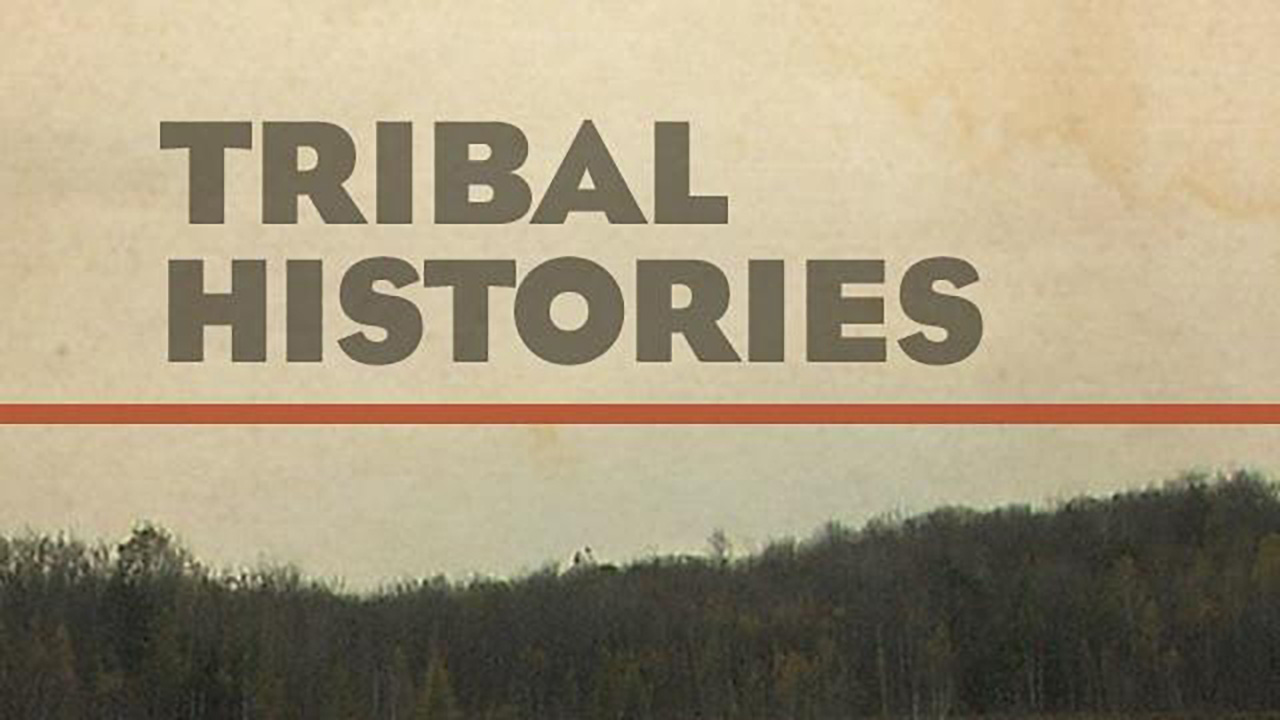
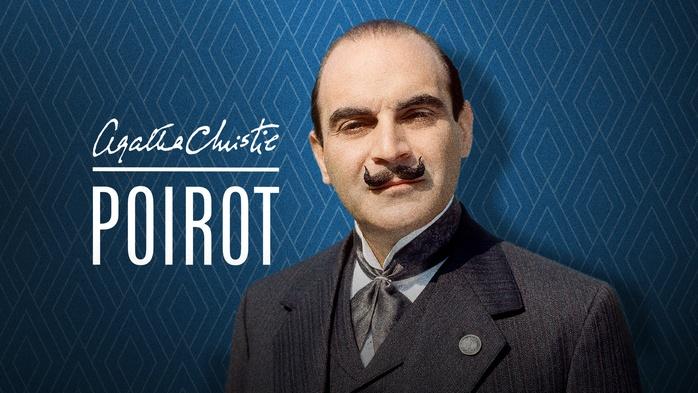



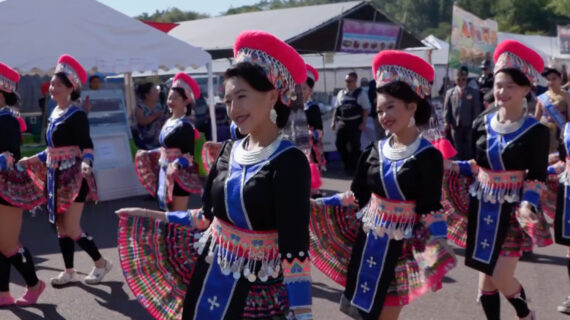
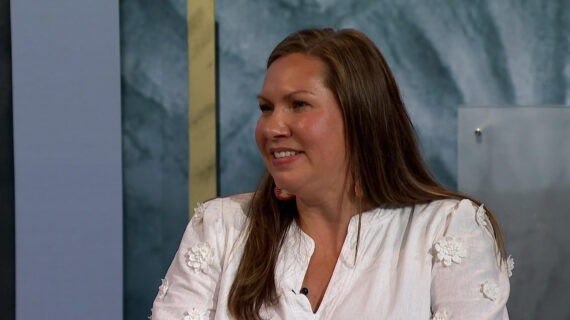
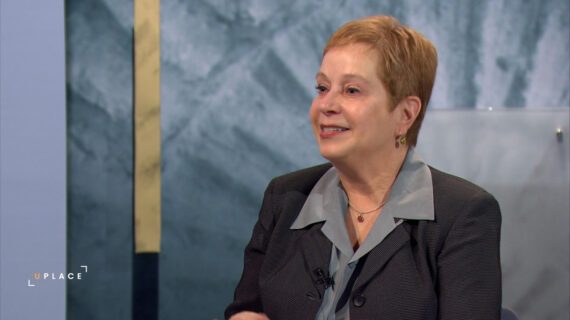
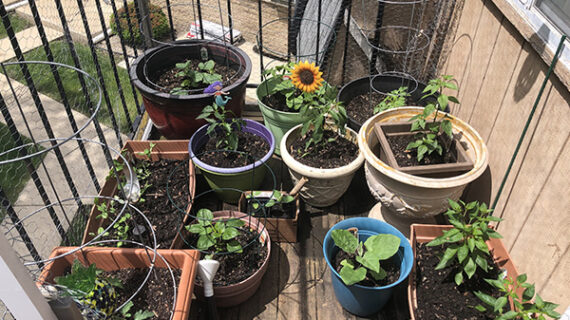
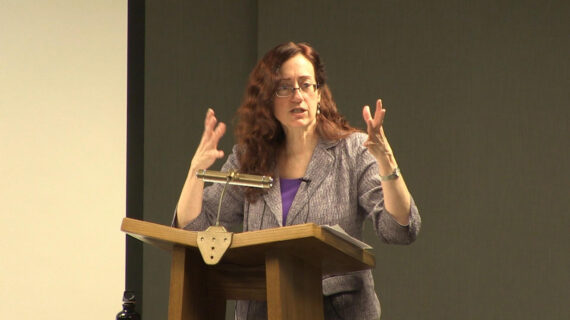
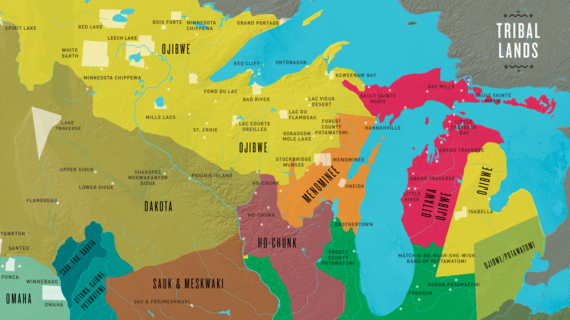
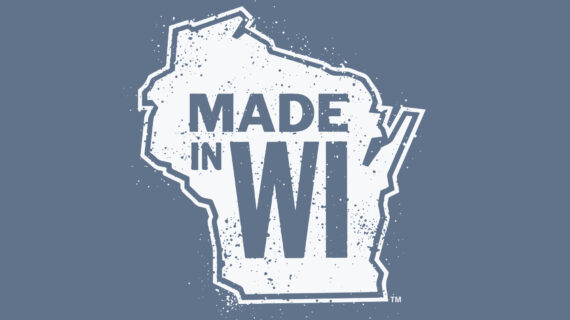
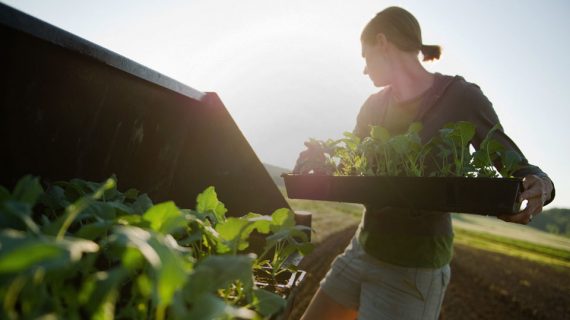
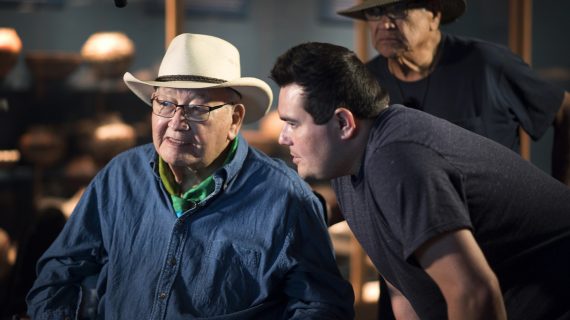


Follow Us